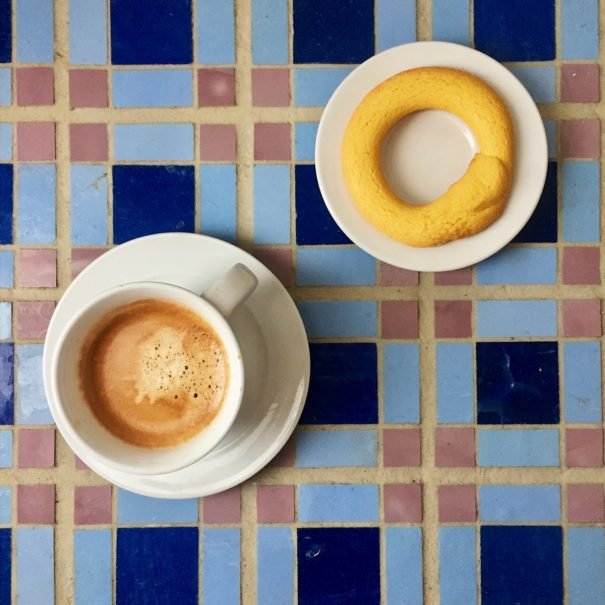
A Dispatch from a Dying Island Where Cookies Are Made to Last

A Dispatch from a Dying Island Where Cookies Are Made to Last
Buranei on Burano
It’s morning on Burano, and the sound of a spinning washing machine woke me. Mornings here are made for cleaning; washing clothes, sweeping the front step, mopping the floor; the sound of metal drying racks being opened in the courtyards.
I stepped out of the front door into the sun. I needed to get going before the vaporettos full of tourists started their assault. On my way to the bakery, there was the scent of laundry soap in the street. Houses here are in every shade of the rainbow: pink, blue, green, red, orange, yellow, purple. Front doors are covered in cloth that lets in the breeze and keeps out prying eyes.
Burano is a village trapped on an island, and it has two main problems. First, it’s highly Instragram-able, which attracts a constant stream of tourists from the main islands of Venice. They disgorge into the streets and proceed to snap photos of the daily lives of the people who live there. Imagine if your front door was constantly photographed. Every flower-covered terrace, each and every corner: #burano.
The second is that most of the residents are older, and the island is at risk of dying out. Young people head elsewhere for jobs, and, as one lady told us “the cinema.” Like many small islands (and towns), it can be boring. The lagoon used to support a fleet of fishermen; most of whom lived on Burano, but the industry is just a shell of what it once was. Locals fondly remember the past, the lagoon full of fish and a quiet island before it was a tourist destination.
All over the island, vendisi signs hang in windows. Our neighbor says, “Do you know someone who might want to buy my mom’s house? It’s been for sale for four years.” Many of the houses are older and in need of renovation—a costly effort on an island. Yet, there are still a few, mostly foreign buyers, with energetic spirits and deep pockets.
The main drag of the island is where all the action happens. The restaurants, bars, cafes, and shops are all here. Both of the most popular bakeries are called Palmisano, a common surname on the island. Both offer the standard cornetto filled with jam, but the local specialty is the buranei. Shaped into a ring or an S, they are the classic local cookies and, this being Italy, cookies are perfectly acceptable for breakfast. I buy four, at one euro each, and walk back home where my wife has prepared a table with some juice, coffee, and a few pieces of sliced fruit.
A mixture of flour, butter, sugar, eggs and maybe a splash of grappa or rum, these cookies are simple. Their dryness is a testament to the typical foods
you find around fishermen: made to last.
Evening. The clothes racks have been replaced with chairs, where neighbors sit and discuss the day’s news. Kids chase a cat and play with a soccer ball. Old men fill the locals bars for a drink. Some nights, the scent of buranei being baked fills the square with a sugary scent.